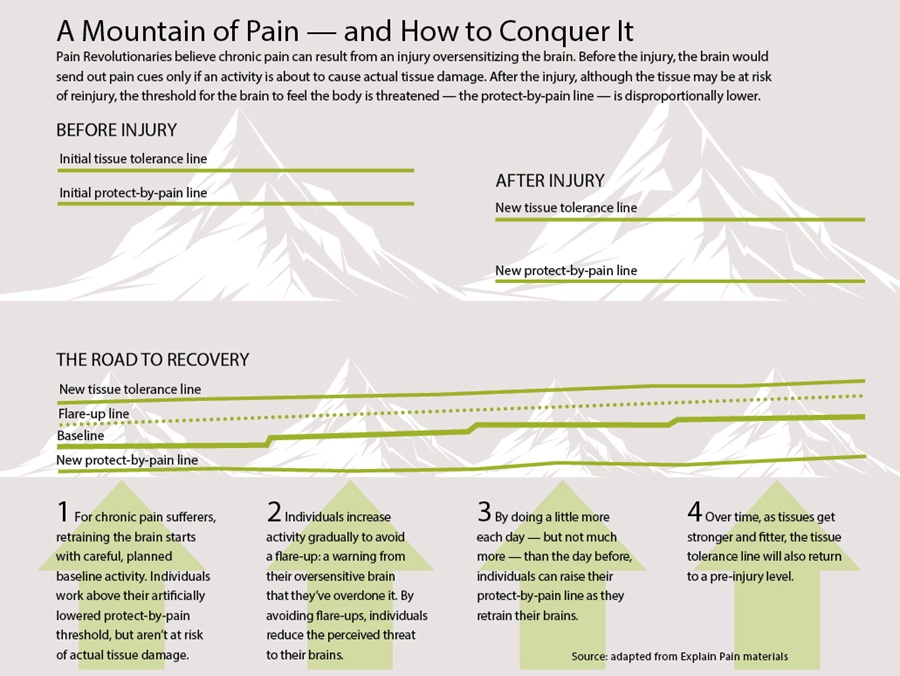This week you were able to practice with an important pain exercise: slowly expanding your effort and pushing the boundaries. But how is it possible that you feel pain so much faster than before, and can do so much less than before?
The mountain model
To explain this, the 'mountain model' is often used. You could see it this way: normally you would feel pain if you put in a lot of effort. Often this is when you almost perform at the top of your ability. We don't find it strange, for example, to have muscle pain after hard sports.
After an accident, or damage to the body, the limit at which someone feels pain shifts. With much less effort you will feel pain sooner, because your brain wants to protect you from (again) the same damage.
The tricky part is that your head still knows what you could do before. Maybe you also have all sorts of obligations, such as maybe your work or the household, that make sure that you quickly get above the limit on which you feel pain.
So it's very difficult to build up slowly and accept your new 'lower limit' of pain. In the next picture you can see how that works:

If you want to know more about the development of pain in your body, I recommend the 'Explain Pain' by Moseley and Butler. A profound and sometimes even a bit difficult book, but it explains very well how chronic pain arises and works!
